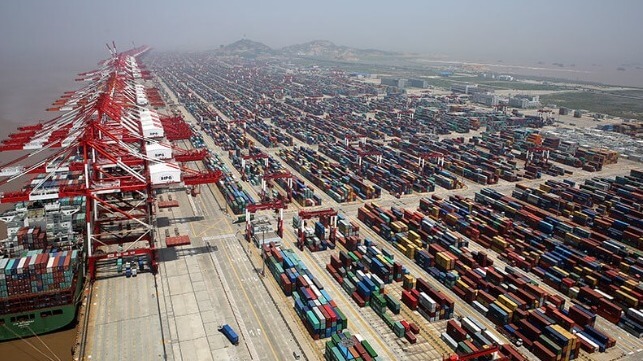Shanghai Will Invest $7B to Increase Regional Container Capacity

Shanghai port officials announced plans for a massive new container terminal that will expand the region’s throughput capacity by nearly a quarter. The project which calls for more than a $7 billion investment in the port capacity in the Yangtze region comes as Shanghai is feeling increasing competition both from neighboring Chinese ports as well as Singapore which recently opened its massive new port complex.
The Shanghai International Port Group (SIPG) plans to develop a new container terminal in Zhejiang to the north of its current Yangshan Deep Water Port. The new terminal will have nearly 3.5 miles of wharf including seven berths for the largest containerships and 15 berths for smaller vessels operating regional services.
Work on the new terminal facility will begin in the coming month and will be introduced in phases with completion by the end of the decade. When it is finished, the new facility will have an annual capacity of 11.6 million TEU.
The plans for the new capacity come as Shanghai has been the world’s largest container port for more than a decade. In July 2022, the port set a new monthly volume record handling more than 4.3 million TEU compared to its monthly average of just over 3.9 million TEU. The previous record had been set in October 2020 when the port handled 4.2 million TEU.
The new terminal in Zhejiang is part of the master plan for the region. They are working to expand capacity and improve service for inland transportation along the Yangtze and river-to-sea transportation.
Located just to the south of Shanghai, the neighboring Ningbo-Zhoushan port complex also continues to grow in part benefitting from congestion at Shanghai and the recent COVID-19-related lockdowns. In July 2022, Ningbo-Zhoushan handled nearly 3.3 million TEU which represented a 26 percent increase in volumes. For all of 2022, the port has been averaging just under 3 million boxes per month giving it a total of just over 17.5 million TEU for the first six months of the year.
Alphaliner in its most recent analysis of the port notes that Ningbo-Zhoushan overtook Singapore to become the second busiest container port. They however reported that some of the volume was due to the lockdowns in Shanghai. Chinese officials in Ningbo however have also been working to build throughput volumes at the port as part of their regional expansion plans.
At the beginning of September, Singapore opened its massive new Tuas port facility after a decade of planning and more than $14 billion in investment. Tuas when it is completed will have a capacity to handle 65 million TEUs annually. The port is part of Singapore’s plan to increase its role as a regional hub and build its role in transshipment into other parts of Asia.
